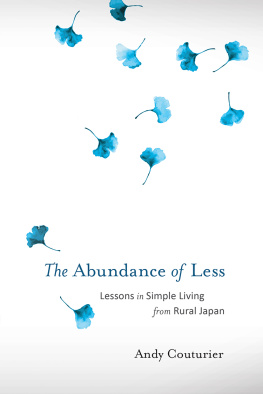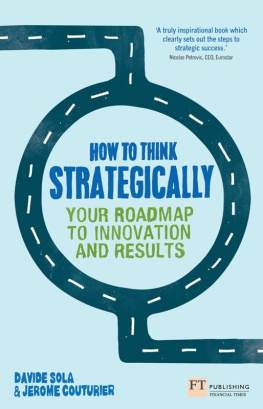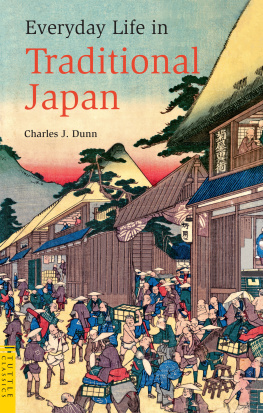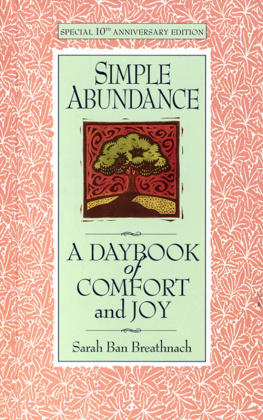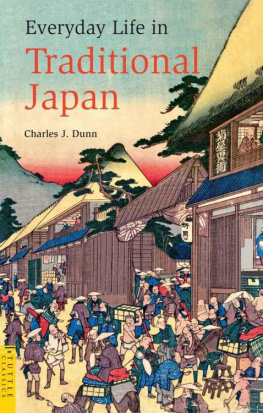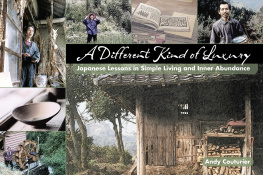
Copyright 2017 by Andy Couturier. All rights reserved. No portion of this book, except for brief review, may be reproduced, stored in a retrieval system, or transmitted in any form or by any meanselectronic, mechanical, photocopying, recording, or otherwisewithout the written permission of the publisher. For information contact North Atlantic Books.
Published by
North Atlantic Books
Berkeley, California
Cover photo iStockphoto.com/Elinalee
Cover design by Jasmine Hromjak
Interior design by Happenstance Type-O-Rama
Photo Credits
Unless otherwise indicated below, all photos are courtesy of Andy Couturier.
Introduction Japan Map, page vi: Dierdre Bailey
Chapter 1 Oizumi, pages 7, 13, and 16: Hiromi Hayashi
Chapter 2 Nakamura, pages 40, 57, 58, and 60: Junko Motoyama
Chapter 4 Murata, page 111: Patti Sanchez
Chapter 5 Amemiya, page 171: Koichi Yamashita
Chapter 6 Ito, page 180: Atsuko Matsushita; Ito, page 219: Goro Goto
Chapter 7 Wakako, page 248: Deirdre Hewitson
Chapter 8 Gufu, pages 260, 293, and 299: Junko Motoyama
Chapter 9 Yamashita, page 326: Koichi Yamashita
Afterword page 404: Chris Twemlow
About the Author page 406: Cynthia Kingsbury
Printed in the United States of America
The Abundance of Less: Lessons in Simple Living from Rural Japan is sponsored and published by the Society for the Study of Native Arts and Sciences (dba North Atlantic Books), an educational nonprofit based in Berkeley, California, that collaborates with partners to develop cross-cultural perspectives, nurture holistic views of art, science, the humanities, and healing, and seed personal and global transformation by publishing work on the relationship of body, spirit, and nature.
North Atlantic Books publications are available through most bookstores. For further information, visit our website at www.northatlanticbooks.com or call 800-733-3000.
Library of Congress Cataloging-in-Publication Data
Names: Couturier, Andy, 1964- author.
Title: The abundance of less : lessons in simple living from rural Japan / Andy Couturier.
Other titles: Different kind of luxury
Description: Second Edition. | Berkeley, California : North Atlantic Books,
[2017] | Rev. ed. of: A different kind of luxury, 2010.
Identifiers: LCCN 2017005063| ISBN 9781623171322 | ISBN 9781623171339 (Electronic)
Subjects: LCSH: Sustainable living--Japan. | Japan--Biography.
Classification: LCC GE196.J3 C68 2017 | DDC 640.28/6--dc23
LC record available at https://lccn.loc.gov/2017005063
North Atlantic Books is committed to the protection of our environment. We partner with FSC-certified printers using soy-based inks and print on recycled paper whenever possible.
Dedication

Dedicated to the memory of Jean Jacques Couturier and Akira Ito, two men who believed in, and succeeded in living, a life that matters
Acknowledgments

My mentor Claude Whitmyer once said to me, All books are written by groups of people. As I looked at his shelf of books that day, suddenly my vision changed: all those different groups of people collaborating, right on those pages. How true his statement is! The book you hold in your hands is also a collaboration among many, many people.
This book would have been impossible without Cynthia Kingsbury, my life partner and source of much practical wisdom, who has traveled this journey of writing this book with me for almost two decades, and who has believed in it from the beginning. She has labored with me over every edit, word choice, photo selection, and translation decision, and stuck with the process through the interviews, the book proposal, and the many human relations that every book must negotiate. And she has been an utterly reliable source of wise counsel over the thousands of decisions it takes to create a book.
The genesis and the very existence of this book can be attributed to one of the most spirited and passionate people I have ever met, Atsuko Watanabe. She reached out to Cynthia and me at first to invite me to her homestead in the tiny mountain village of Kamikatsu and subsequently introduced me to every single person in this book. She also translated many pieces of the original written Japanese into English. This is her book as well.
Each of the ten people profiled in these pages gave so much of their time, fed me one fabulous meal after another, advised me on political, social, and cultural issues, explained complex words and concepts in Japanese, laid a futon on the floor for me at night, and then helped me find the correct train schedule to get to my next destination. This book would not have been possible without their participation. Although he does not have his own chapter here, the guidance of Abbot Shucho Takaoka of Tokurinji temple runs through these peoples lives, and his vision of what is important in this life informs much of what their lives and this work have become.
A great debt is also owed to my mother, Edith Couturier, someone perennially interested in other peoples lives. Also I would never have been able to have any of these conversations at all were it not for my two amazing Japanese teachers, Saiko Toyonaga and Mariko Shimomura, and the people of the Tokushima City International Association and the Tokushima Prefecture International Association who offered absolutely free classes in Japanese. Four other people have given much of their time in many translations: Naoko and Yoshiki Sakane, Matthew Stevens, and Izumi Motai. I was also fortunate enough to be granted a long and fabulous interview with Marvin Fishman, who made films with Masanori Oe in the 1960s.
I also received generous feedback from numerous friends who read early drafts of many of these chapters. They are Ginevra House, Amy Rasmussen, Nina Geraghty, Deirdre Bailey (who also contributed the beautiful map of Japan to these pages), Kim Sevcik, Autumn Linn, Catherine Benedict, my sister Anna Lisa Couturier, my cousin Jim Boorstein, Jane Brunette, John Gibler, John Chung, Rachel Levy, Fani Nicheva, and Esti Feller. I also must thank Sawako Yoshimura and Naoko Adachi for the hundreds of hours they put into translating this entire book back into Japanese.
That this book is in your hands now is very much due to the moral support given to me by so many people along the way. They include, first, my two mentors and teachers, Susan Mathews-Scott and Claude Whitmyer. They also include family members, including the ones mentioned above, but also Will Boorstein, John Couturier, Joan Poole, Greg and Graham Couturier, Melissa Chaney, Nicholas Palmucci, and many friends as well, including Suzanne Kamata, Hank Glassman, Cathy Smith, Chris Twemlow, Adam Kinsey, Akiyo Kawabata, Margaret Stawowy, Kai Sawyer, Jeff Kovar, David Abel, Robin Bishop, Johnnye Gibson, Rebekah Eppley, Anne McCaw, Makoto Imaeda, Denise Carrigg, Sean OToole, and Ellen Kane.
I also would like to thank some people who do the tireless labor of the publishing trade, first of all Peter Goodman and Linda Ronan of Stone Bridge Press where the first edition of this book was published, as well as Hisae Matsuda and Ebonie Ledbetter of North Atlantic Books.
At the Japan Times, where profiles were published of the ten people in this book and twelve other fascinating people, I wish to thank my editor, Ms. Yamaguchi, as well as Aleck McKay-Smith and Mark Thompson. At
Next page
